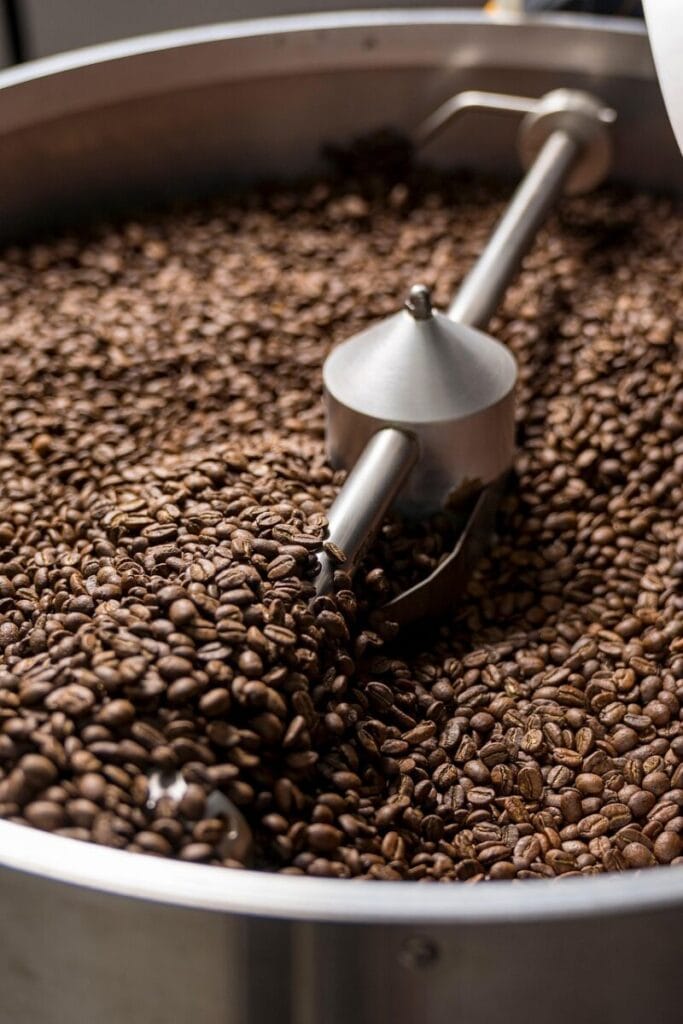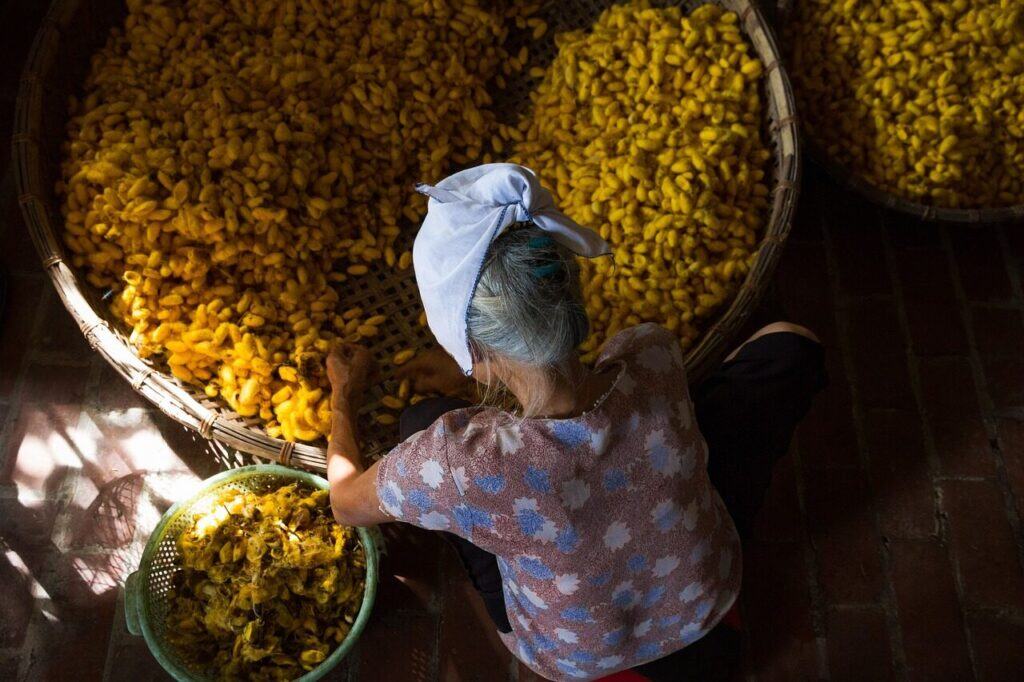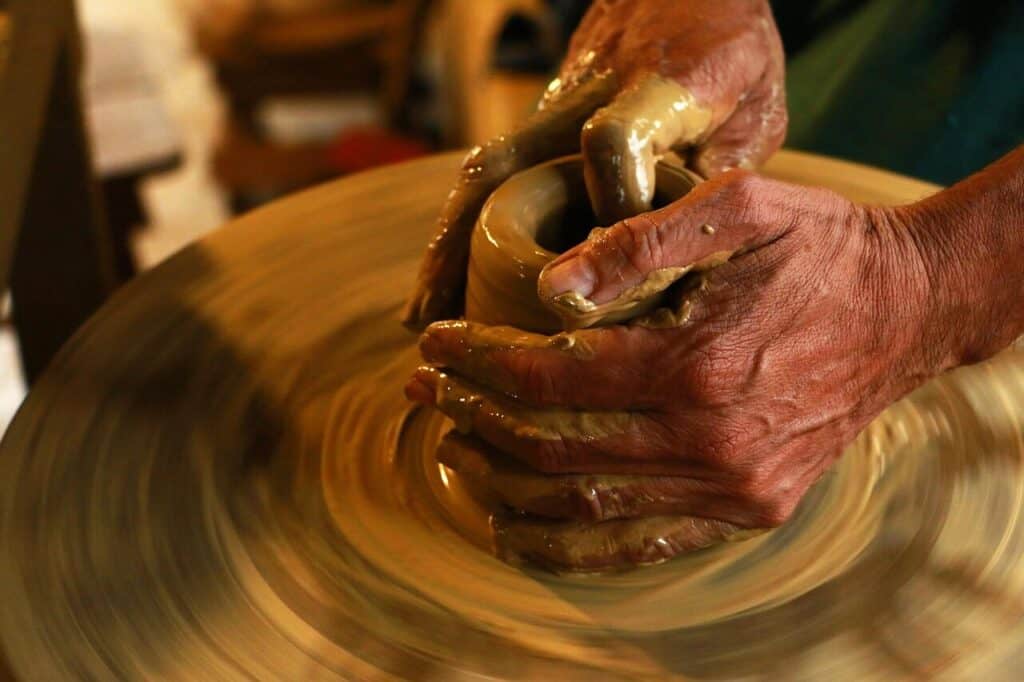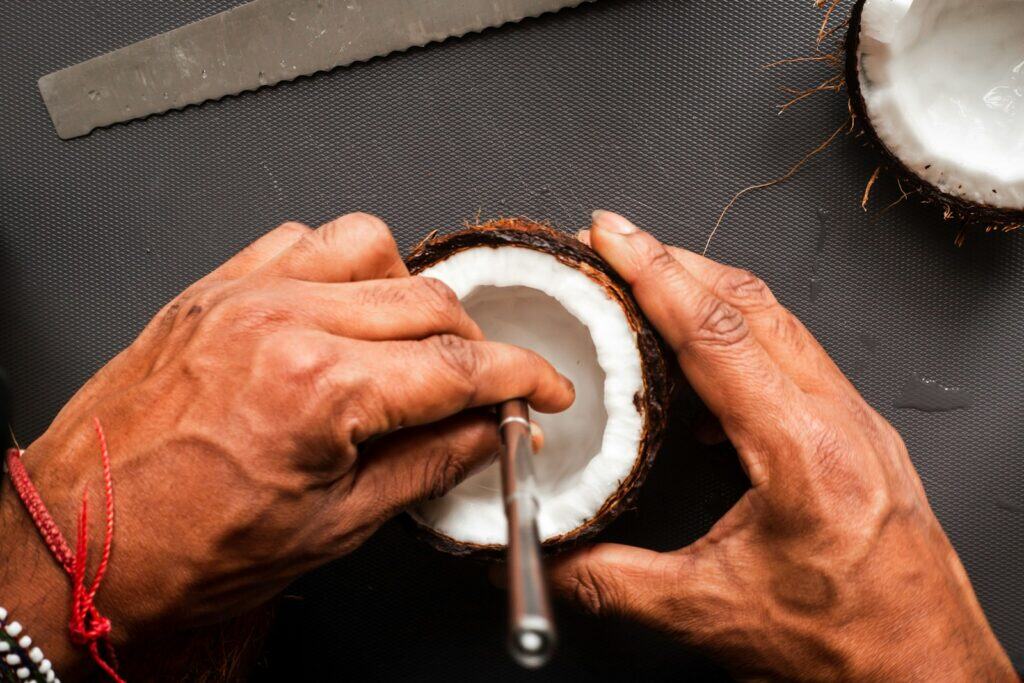Наука о совершенстве поверхности: Технический анализ процесса полировки
Введение
Ваш поиск технического анализа процесса полировки на этом заканчивается. Это не просто обзор поверхности. Это глубокое погружение в сложную науку, лежащую в основе создания идеальных поверхностей.
Полировка выходит далеко за рамки простого финишного этапа. Это точно контролируемая инженерная дисциплина. Этот процесс представляет собой сложный танец между механическими силами и химическими реакциями. Цель? Достижение определенных, поддающихся измерению характеристик поверхности.
Мы выходим за рамки идеи косметического блеска. Вместо этого мы входим в мир инженерных спецификаций. Это включает в себя достижение шероховатости на уровне ангстрема. Это означает создание плоскостности на нанометровом уровне. И для этого требуется подповерхностная поверхность, свободная от кристаллических повреждений.
В этой статье рассматривается процесс полировки с точки зрения материаловедения и инженерии. Мы проанализируем фундаментальные принципы удаления материала. Мы классифицируем основные промышленные методы. Мы рассмотрим важнейшие компоненты процесса. Мы также рассмотрим контроль стратегии и методы измерения Необходим для получения повторяемых, высокоэффективных результатов.
Чтобы представить четкий и структурированный анализ, мы рассмотрим следующие ключевые темы:
- Фундаментальная наука: Основные механические и химические механизмы удаления материала на микроскопическом уровне.
- Таксономия процессов: Классификация и сравнение современных технологий промышленной полировки.
- Ключевые компоненты: Подробное рассмотрение критического треугольника: абразивы, суспензии и колодки.
- Управление процессом: Параметры, модели и метрология, используемые для превращения полировки из искусства в науку.
- Продвинутые техники: Взгляд на будущее полировки, включая новые и специализированные методы.
Основы удаления материалов
Чтобы управлять процессом полировки, необходимо сначала разобраться в фундаментальной науке. Как материал, удаляемый с поверхности заготовки? Удаление происходит на атомном или микроскопическом уровне. Оно регулируется двумя основными способами: механическим истиранием и химической реакцией.
Эти два режима не всегда независимы. Во многих передовых процессах они работают вместе. Это позволяет добиться результатов, которых не смог бы достичь ни один из них в отдельности.
Физика механического истирания
По своей сути механическая полировка - это форма микрообработки. Абразивные частицы взвешиваются в жидкой суспензии. Они прижимаются к заготовке полировальным диском. Эти частицы действуют как микроскопические режущие инструменты.
Взаимодействие между абразивной частицей и поверхностью можно разделить на три режима. Плугование происходит, когда частица деформирует материал без значительного удаления, создавая канавку. Разрушение происходит в хрупких материалах, когда микротрещины распространяются и вызывают откол материала. Резание - идеальный режим. В этом случае происходит чистое удаление кусочка материала, как на наноразмерном станке.
Эффективность этого процесса в значительной степени зависит от гранулометрического состава абразива (PSD). Для агрессивного удаления остатков используются более крупные абразивы в диапазоне нескольких микрон. Для достижения сверхгладкой окончательной обработки, как при окончательной полировке полупроводников, размер абразива уменьшается до 10-50 нанометров.
Движущими силами являются трение и давление. Приложенная прижимная сила создает контактное напряжение в месте соприкосновения каждой абразивной частицы с заготовкой. Это обеспечивает физическое удаление материала.
Химико-механический синергетический эффект
Химико-механическая планаризация (CMP) представляет собой вершину синергетического эффекта полировки. Она является доминирующей процесс в производстве полупроводников не зря. Он позволяет добиться глобальной плоскостности при минимальном повреждении поверхности. Это невозможно при использовании чисто механических методов.
Принцип основан на химической реакции, в результате которой поверхность заготовки сначала ослабляется. Суспензия содержит химические вещества, которые вступают в реакцию с подложкой. В результате образуется мягкий, химически модифицированный поверхностный слой. Его часто называют пассивирующим или гидратированным слоем.
Затем этот размягченный слой легко и бережно удаляется механическим воздействием абразивов. Энергия, необходимая для такого удаления, намного меньше той, которая потребовалась бы для обработки объемного, непрореагировавшего материала.
Цикл CMP можно рассматривать как непрерывный четырехэтапный процесс, действующий в каждой точке полупроводниковой пластины:
- Поверхностная реакция: Химические вещества, содержащиеся в шликере, вступают в реакцию с верхними атомными слоями заготовки.
- Формирование мягкого слоя: В результате химической реакции образуется тонкий, механически непрочный слой.
- Механическое удаление: Полировальный диск и абразивные материалы стирают этот мягкий слой.
- Свежая поверхность: Нетронутая, непрореагировавшая поверхность готова к тому, чтобы цикл начался заново.
Эта элегантная синергия обеспечивает высокую скорость съема материала. В то же время она обеспечивает превосходное качество обработки поверхности без повреждений.
Таксономия процессов полировки
Термин “полировка” охватывает широкий спектр промышленных технологий. Каждый из них оптимизирован для конкретных материалов, геометрии и требований к поверхности. Понимание этой классификации имеет решающее значение для выбора правильного метода для конкретного применения.
Мы выделим несколько основных методов промышленной полировки. Мы подробно опишем их механизмы и основные области применения. Это позволит сравнить их возможности и ограничения.
Основные методы полировки
Притирка и полировка: Это традиционные, чисто механические процессы. При притирке используется свободная абразивная суспензия для достижения высокой плоскостности поверхности. Последующие этапы полировки используют более мелкие абразивы для улучшения качества поверхности.
Химико-механическая полировка/планаризация (CMP): Как уже говорилось, CMP является стандартом для глобальной планаризации кремниевых пластин и других слоев при изготовлении интегральных схем. Его определяющей особенностью является сочетание химического и механического воздействия.
Электрополировка: Это электрохимический процесс, используемый исключительно для проводящих металлов. Заготовка становится анодом в электролитической ячейке. Материал удаляется ион за ионом, в результате чего получается яркая, гладкая и часто защищенная поверхность. Он отлично подходит для сложных форм, так как не требует механического контакта.
Магнитореологическая отделка (MRF): MRF - это детерминированный, управляемый компьютером процесс полировки, используемый для высокоточной оптики. В нем используется магнитно-жесткая жидкость, содержащая абразивы, для точного удаления материала в соответствии с заранее заданной картой поверхности. Это позволяет исправлять нанометровые погрешности поверхности.
Вибрационная финишная обработка/грунтовка: Это пакетный процесс, используемый для снятия заусенцев, радиусов и полировки большого количества мелких деталей. Детали помещаются в ванну или бочку с абразивным материалом. Вибрация или галтовка создает относительное движение, необходимое для удаления материала.
Сравнительный анализ процессов
Чтобы помочь в выборе процесса, в следующей таблице приведено прямое сравнение основных методов полировки. В ней они сравниваются на основе основного механизма, областей применения и возможностей производительности.
Имя процесса | Основной механизм | Типовые применения | Достижимая шероховатость поверхности (Ra) | Ключевые преимущества | Основные ограничения |
Притирка и полировка | Механическое истирание | Оптика, механические уплотнения, подготовка подложки | < 1 нм | Высокая плоскостность, применимость к различным материалам | Поверхностные повреждения, медленная окончательная отделка |
CMP | Химико-механические | Полупроводниковые пластины (Si, SiO₂, W, Cu) | < 0,5 нм | Отличная глобальная плоскостность, низкая дефектность | Сложность процесса, стоимость расходных материалов |
Электрополировка | Электрохимический | Медицинские имплантаты, вакуумные компоненты, пищевая сталь | < 50 нм | Отсутствие механического напряжения, хорошо подходит для сложных форм | Только для проводящих материалов, краевые эффекты |
MRF | Механические (с магнитным управлением) | Высокоточная оптика (телескопы, лазеры) | < 1 нм | Детерминированный, высокая точность, быстрая коррекция | Высокая стоимость оборудования, специализированное применение |
Критический треугольник
Успешный процесс полировки диктуется точным взаимодействием трех важнейших компонентов. Это абразив, химический состав суспензии и полировальный диск. Понимание и контроль каждого элемента этого “критического треугольника” является основополагающим фактором для достижения желаемых результатов.
Эти расходные материалы не являются независимыми переменными. Их свойства взаимосвязаны. Их выбор должен рассматриваться как комплексная система, разработанная для конкретного материала и применение.
Абразивы: Режущий компонент
Абразив является основным средством механического удаления материала. Его основные свойства определяют его производительность. К ним относятся твердость, форма частиц, распределение по размерам и химическая реактивность. Абразив должен быть тверже материала, который он полирует. Этот принцип определяется шкалой твердости Мооса.
Форма частиц влияет на механизм удаления. Острые, угловатые частицы режут более агрессивно. Округлые частицы создают более гладкое, менее поврежденное покрытие. Распределение частиц по размерам должно строго контролироваться, чтобы обеспечить равномерное удаление и предотвратить появление царапин от чрезмерно крупных частиц.
Обычные абразивные материалы выбираются в зависимости от обрабатываемой детали. Например, оксид церия уникально эффективен для полировки стекла благодаря особому химическому сродству. Алмаз необходим для полировки сверхтвердых материалов, таких как карбид кремния.
В следующей таблице приведены свойства и общие области применения стандартных промышленных абразивов.
Абразивный материал | Твердость по Моосу | Типичный диапазон размеров частиц | Ключевые приложения | Примечания |
Оксид алюминия (Al₂O₃) | 9 | 0,3 - 20 мкм | Металлы, сапфир, общая притирка | Экономичный, выпускается во многих сортах. |
Оксид церия (CeO₂) | 6 | 50 нм - 5 мкм | Стекло, Оптика, Диоксид кремния (SiO₂) | Имеет компонент химической полировки стекла. |
Карбид кремния (SiC) | 9.5 | 1 - 100 мкм | Керамика, твердые металлы, камень | Очень твердые и острые; используются для быстрого удаления отходов. |
Алмаз | 10 | 10 нм - 50 мкм | Твердые материалы (SiC, GaN), Жесткие диски | Предельная твердость, но более высокая стоимость; часто используется в виде суспензии или закрепляется в колодке. |
Роль химического состава шлама
Суспензия - это не просто жидкий носитель для абразивных частиц. Ее химический состав - это активный компонент, который может кардинально изменить процесс полировки, особенно в CMP. В качестве базовой жидкости обычно используется высокочистая деионизированная (DI) вода.
Химические добавки вводятся для выполнения определенных функций. Окислители, такие как перекись водорода или перманганат калия, используются для химической реакции с металлом или диэлектриком и размягчения их поверхности.
Комплексообразователи или хелатирующие агенты добавляются для связывания с ионами удаляемого материала. Они удерживают их во взвешенном состоянии в суспензии. Это предотвращает повторное осаждение удаленного материала на поверхности заготовки, что может привести к появлению дефектов.
Поверхностно-активные вещества и диспергаторы имеют решающее значение для стабильности процесса. Они покрывают абразивные частицы, не позволяя им слипаться. Благодаря этому они остаются равномерно распределенными в суспензии.
Наконец, для контроля химической среды используются pH-корректоры, как правило, кислоты или основания. Скорость многих химических реакций сильно зависит от рН. Например, скорость удаления диоксида кремния в суспензии CMP на основе диоксида кремния значительно возрастает при высоком pH (например, pH 10-11). Это связано с повышенной растворимостью диоксида кремния.
Интерфейс полировального круга
Полировальный диск - это интерфейс, который передает давление на заготовку и распределяет абразивную смесь по поверхности. Его свойства так же важны, как абразив и шликер.
Характеристики накладок включают в себя материал, твердость (измеряется в дюрометрах), пористость и рисунок канавок. Большинство современных накладок изготавливаются из полиуретана, литого или наполненного для придания определенных свойств.
Твердость падов - основной фактор, определяющий результат полировки. Твердые пады (с высоким дюрометром) менее податливы и сохраняют свою форму под давлением. Это делает их идеальными для достижения превосходной глобальной планарности, поскольку они перекрывают низкие участки на заготовке.
И наоборот, мягкие накладки (низкий дюрометр) более податливы. Они прилегают к локальному рельефу поверхности. Это приводит к повышению локальной гладкости и снижению плотности микроскопических дефектов.
Канавки, вырезанные на поверхности колодки, необходимы для транспортировки шлама. Они обеспечивают каналы для подачи свежего шлама к поверхности заготовки. Они также позволяют отводить отработанную шликерную смесь вместе с удаленным материалом и теплом. Это предотвращает такие нежелательные эффекты, как гидропланирование, и обеспечивает равномерное полирование.
Контроль процессов и метрология
Для достижения повторяемости и высокой производительности процесса полировки необходимо перейти от качественного “искусства” к количественной науке. Это достигается путем строгого контроля процесса и точных измерений.
С точки зрения инженера-технолога, успех определяется способностью предсказуемо связать контролируемые входные параметры с измеряемыми выходными характеристиками.
Основные параметры процесса
В любой полировальной системе несколько ключевых параметров служат основными рычагами управления. Самые основные из них - прижимная сила, скорость и расход шлама.
Прижимная сила, или давление, - это сила, действующая на единицу площади заготовки. Скорость вращения - это скорость вращения пластины (которая удерживает подкладку) и носителя (который удерживает заготовку). Скорость потока шлама определяет, сколько свежего шлама подается в процесс.
Упрощенная модель скорости съема материала (MRR) представлена уравнением Престона: MRR = Kp * P * V. Здесь P - давление, V - относительная скорость, а Kp - коэффициент Престона. Это комбинированная константа, которая учитывает все остальные факторы (абразивные материалы, химический состав, колодка и т.д.).
Хотя это уравнение дает полезное приближение первого порядка, оно имеет существенные ограничения в современной CMP. Оно не учитывает химические эффекты, кондиционирование площадок и тепловые колебания. Все это сильно влияет на процесс. Температура, в частности, является критическим параметром, поскольку она влияет на скорость химических реакций в соответствии с уравнением Аррениуса.
Ссылки на параметры и характеристики
Оптимизация процесса заключается в балансировке этих параметров для достижения желаемого результата. Каждая корректировка влечет за собой компромиссы. Например, распространенной проблемой является эрозия по краям (повышенное удаление на краю пластины). Часто эту проблему можно уменьшить, отрегулировав профиль давления на стопорном кольце носителя.
В следующей таблице приведены первичные и вторичные эффекты регулировки основных параметров процесса. Она служит практическим руководством по поиску и устранению неисправностей и оптимизации процесса.
Параметр | Первичный эффект | Вторичный эффект / компромисс |
Повышение давления (P) | Повышает скорость удаления материала (MRR) | Может увеличить количество дефектов, неравномерность и износ колодок. |
Увеличить скорость (V) | Увеличивает MRR | Может привести к гидродинамическому подъему (гидропланированию), тепловым эффектам и снижению плоскостности. |
Увеличение расхода шлама | Улучшает охлаждение и удаление мусора | Увеличивает стоимость расходных материалов; не может увеличить MRR сверх точки насыщения. |
Изменение твердости колодки | Более жесткие накладки улучшают плоскостность | Более мягкие подушечки улучшают гладкость поверхности и уменьшают количество царапин. |
Повышение температуры | Увеличивает скорость химических реакций и MRR | Может привести к нестабильности процесса и повлиять на химический состав суспензии. |
Основы метрологии поверхности
Принцип “если не можешь измерить, то не сможешь улучшить” имеет первостепенное значение для полировки. Измерения после процесса необходимы для квалификации, контроля и управление процессом выход.
Профилометрия щупом - это контактный метод, используемый для измерения таких параметров шероховатости поверхности, как Ra (средняя шероховатость) и Rq (среднеквадратичная шероховатость). Он также измеряет волнистость большой длины.
Для измерений с самым высоким разрешением используется атомно-силовая микроскопия (АСМ). АСМ позволяет получать изображения поверхностей в масштабах ангстрема или нанометра. Она позволяет получить подробную информацию о шероховатостях наномасштаба и выявить микроскопические дефекты, которые не могут быть обнаружены другими методами.
Интерферометрия в белом свете - это мощный бесконтактный метод, позволяющий получить полную трехмерную топографическую карту поверхности. Она широко используется для измерения плоскостности, высоты ступеней и общей формы поверхности с высокой точностью и скоростью.
Передовые и перспективные техники
Неустанное стремление к созданию более компактных, быстрых и сложных устройств постоянно расширяет границы технологий полировки. Исследования и разработки направлены на обеспечение возможности обработки новых, сложных материалов. Они также направлены на достижение беспрецедентных уровней точности и чистоты.
Эти передовые технологии позволяют решать производственные задачи нового поколения. От сверхтвердых подложек до экологической устойчивости.
Новые методы полировки
Несколько новых и специализированных методов набирают обороты для нишевых и будущих применений.
- Фиксированная абразивная полировка: В этом методе абразивные частицы внедряются непосредственно в поверхность полировальника. Это исключает необходимость использования суспензии, снижает затраты на расходные материалы и количество отходов. Кроме того, этот метод обеспечивает потенциально лучший контроль над взаимодействием абразива с заготовкой, что приводит к улучшению дефектности.
- Электрохимическая механическая полировка (ECMP): ECMP - это гибридный процесс, разработанный для труднообрабатываемых металлов, таких как вольфрам или никелевые сплавы. Он сочетает анодное растворение электрополировки с мягким механическим истиранием. Благодаря этому достигается высокая скорость удаления материала при очень низком уровне повреждения поверхности и напряжения.
- Полировка с помощью плазмы: Для сверхтвердых материалов, таких как алмаз, нитрид галлия (GaN) или карбид кремния (SiC), обычная полировка выполняется крайне медленно и может привести к значительным подповерхностным повреждениям. При плазменной полировке используется реактивная плазма для химической активации поверхности. Это позволяет достичь “неповрежденного” удаления с использованием гораздо более мягкого абразива.
- Сухая полировка: Важным направлением исследований является разработка методов абсолютно сухой полировки. В этих методах могут использоваться лазеры или кластеры газов под напряжением. Их цель - полностью отказаться от использования жидких суспензий. Главной движущей силой является экологическая безопасность, так как это позволит резко сократить потребление воды и химические отходы.
Заключение: Стремление к совершенству
Стремление получить идеальную поверхность - краеугольный камень современной технологии. Мы убедились, что достижение этой цели - не искусство, а строгая наука. Она основана на глубоком понимании фундаментальных принципов.
Успешный процесс полировки зависит от контролируемой синергии механических сил и химических реакций. Это задача системного уровня, требующая тщательной совместной оптимизации критического треугольника: абразива, суспензии и накладки.
Преобразование этого сложного взаимодействия в предсказуемый производственный процесс достигается благодаря подходу, основанному на данных. Строгий контроль процесса, основанный на законе Престона и более совершенных моделях и подтвержденный точными измерениями, является обязательным условием.
В перспективе развитие полировки будет оставаться ключевым фактором для будущих технологий. Способность создавать все более совершенные поверхности будет определять границы возможного - от квантовых компьютеров и мощной электроники до передовых медицинских приборов и сверхточной оптики.
- Материаловедение и инженерия поверхности - ASM International https://www.asminternational.org/
- Производственные процессы и точное машиностроение - SME https://www.sme.org/
- Производство полупроводников и CMP - SEMI https://www.semi.org/
- Полировка и отделка поверхности - Википедия https://en.wikipedia.org/wiki/Polishing
- Стандарты точного машиностроения - ASME https://www.asme.org/
- Обработка поверхности и финишная обработка - NIST https://www.nist.gov/
- Технология обработки материалов - ScienceDirect https://www.sciencedirect.com/topics/engineering/polishing
- Производство и полировка оптики - OSA (Optica) https://www.optica.org/
- Промышленная обработка поверхностей - Thomasnet https://www.thomasnet.com/
- Образование в области машиностроения - MIT OpenCourseWare https://ocw.mit.edu/









